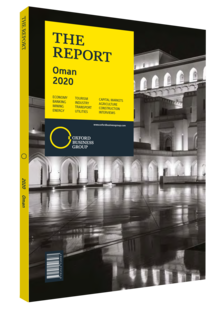Oman's banking sector consolidates amid central bank reforms and increased profitability
The Omani banking sector comprises 16 conventional commercial banks, of which nine are branches of foreign financial institutions and seven are locally incorporated. In addition, there are two state-owned specialised banks and two local Islamic banks. Sharia-compliant banking, which was introduced in 2012, accounted for 13% of Oman’s banking sector in 2019. Indeed, in recent years the Islamic segment has grown faster than conventional banking, with this being evident in its net profits, which grew by 76% in 2018. Bank Muscat is the sultanate’s largest and most profitable bank, with a network of 165 branches, over 3700 employees and a customer base of 2m clients, as of 2019. It offered a dividend yield of 3.75% as of December 4, 2019.
Performance & Reforms
Banks in Oman have been able to boost their capital adequacy, as required by the Central Bank of Oman (CBO), by issuing perpetual bonds, rights issues and other instruments in the international market. As a result, banks in Oman are well capitalised, with Bank Muscat having a capital adequacy ratio of 18.86% in June 2019, one of the highest in the GCC. This provides a buffer to Omani banks in times when deposit growth is low and asset quality has the potential to deteriorate. Amid difficult economic conditions, the CBO has played an active role in introducing reforms to alleviate issues such as delays in payments from government to contractors, and reduced capital adequacy requirements. Furthermore, the CBO eased restrictions on loan repayments for the construction sector, which has been facing challenges due to delayed payments from the state. In an effort to upgrade the financial infrastructure of Oman, the CBO launched MpClear, a new interbank mobile payments and clearings system, in July 2017.
Credit growth has been stable, standing at 4.5% in 2018. It is expected to fall to 4.0% in 2019 before returning to 4.5% in 2020. This is lower than the 8.7% annual growth recorded in the past decade but is in line with the credit growth forecasts of the GCC region. The decline in loan growth is primarily due to large corporate repayments and weak appetite for retail loans. Deposits make up two-thirds of the funding base of banks in Oman. As deposit growth has slowed in recent years, the loans-to-deposit ratio has risen to over 100% for most banks. In September 2019 credit ratings agency Moody’s maintained a negative outlook for the sector, with non-performing loans expected to rise from 2.8% in June 2019 to between 3.2% and 3.7% of total loans in 2019-20, with the stressed construction sector and dearth of large borrowers heightening the risk. Nevertheless, Moody’s expects capital to remain sound and profitability to remain robust.
Opportunities & Challenges
Interest rates on loans and deposits in Oman are driven purely by domestic supply and demand dynamics, along with local liquidity, rather than following the decisions of the US Federal Reserve. Funding costs have been driven up for banks due to increased competition over scarce deposits. Banks in Oman are now trading at a deep discount in relation to its neighbouring GCC states and offer compelling entry valuation for long-term investors.
However, one reason for the discount to GCC borrowers is Oman’s weaker macroeconomic conditions and the expectation of a rise in non-performing loans. Earnings growth in the sector has been low due to a rise in the cost of risk and funding. As of late 2019 the Omani government accounted for over 30% of all deposits in the banking system. Nevertheless, the state has been careful not to withdraw large sums in order to avoid a liquidity crunch, instead relying on international borrowing to fund its budget deficits.
The banking sector is pivotal to supporting growth in the country’s non-oil sectors. With a total of 20 banks serving a population of 4.6m, there is a strong case for consolidation among banks in order to boost pricing power and hence profitability. Furthermore, banks have the potential to harness digitalisation to upgrade customer experience and improve cost efficiencies.
You have reached the limit of premium articles you can view for free.
Choose from the options below to purchase print or digital editions of our Reports. You can also purchase a website subscription giving you unlimited access to all of our Reports online for 12 months.
If you have already purchased this Report or have a website subscription, please login to continue.

